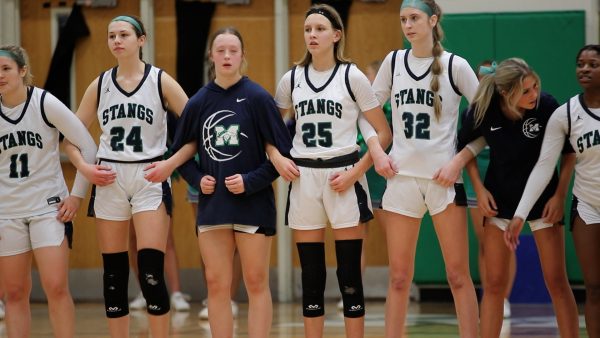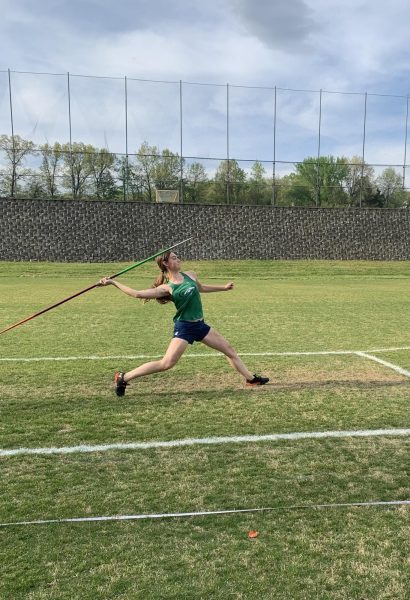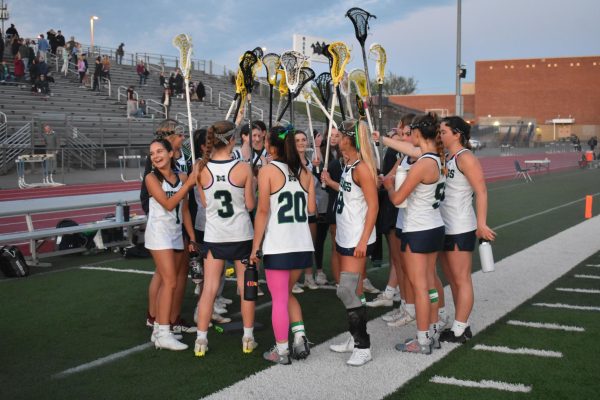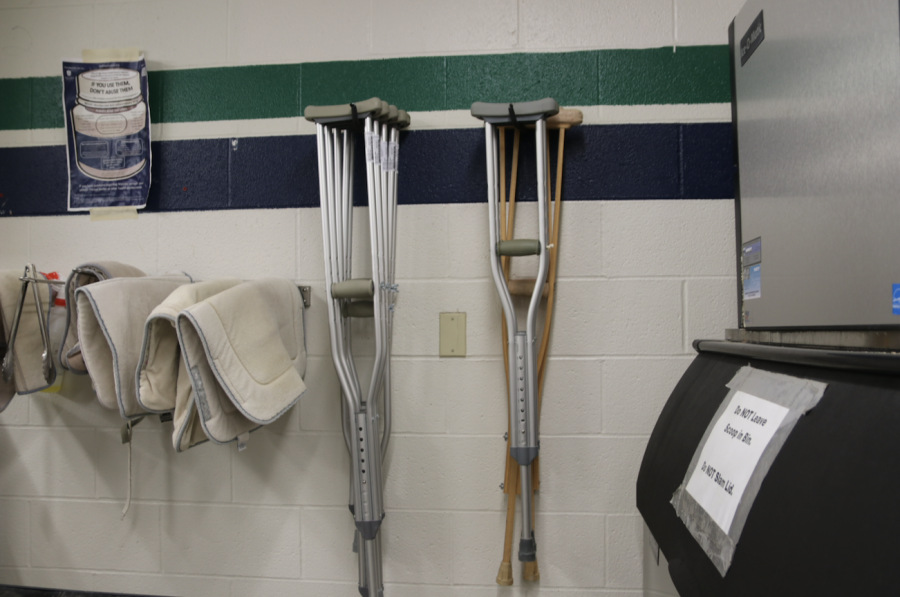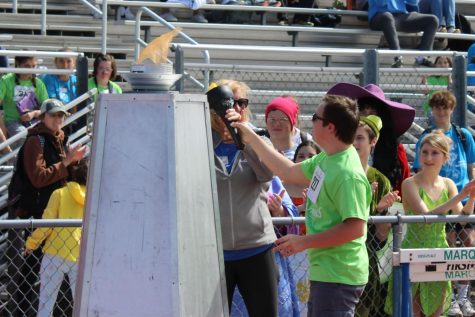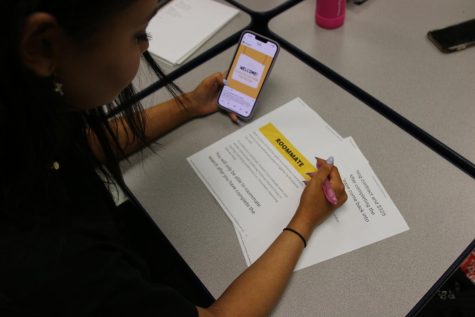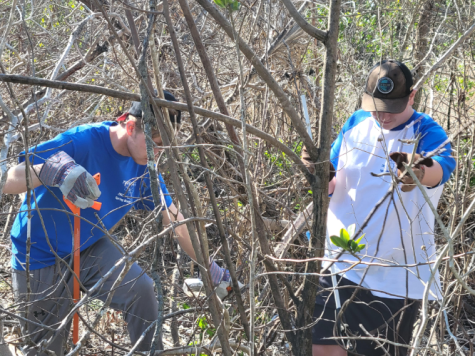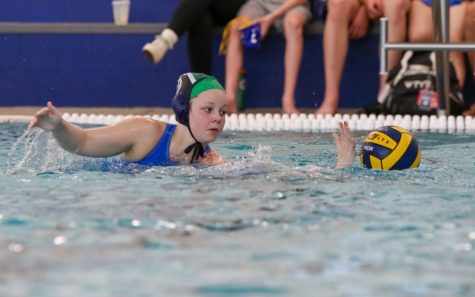Injuries Continue Despite Fewer Winter Sports
Media by Pranav Sriraman
Crutches and equipment in personal trainer Matt Petersen’s office, used for rehabbing injured athletes.
Kahley Sheen, junior, was looking forward to dancing with her teammates on Varsity Mystique. Her season and time in school was temporarily halted after a head injury.
After practicing headstands with her team’s new poms, Sheen said she was unable to catch her weight fast enough causing her head to hit the ground.
After being diagnosed with a concussion, Sheen was benched from participating in any physical activity of any kind for three weeks. She also had restrictions on the amount of time per day that she could view screens, read and write.
“It was hard especially since we had an upcoming competition so I had to try and get better, which meant if my head started hurting I had to stop, while also trying to dance as full out as I could in order to feel confident and prepared for competition,” Sheen said.
Sheen is one of many athletes at MHS who has experienced the more dangerous repercussions of their sport. These injuries can restrict athletes from their sports for weeks or even entire seasons.
Sheen was set back in both school and dance as a result of her injury, and she said she’s still working on catching up with her school work. She still gets the occasional headache while dancing and has to remember to take it easy.
“Although I am back to dancing, I am still technically recovering and it will take some time to fully be back to normal,” Sheen said. “I don’t know how long that will be.”
Mathew Petersen, athletic trainer, said injuries are common in the winter season despite fewer sports being in season. He sees dozens of athletes every day.
“Even in the winter time, when I have a lot less athletes, I’m probably seeing 20 kids right after school,” Petersen said. “Once the bell rings, it’s just a flow of people in here.”
The most common injuries, such as a strain, sprain, or twist, seen during this time are due to overuse or lack of strength. Petersen said some athletes completely stop training once their season is over and that can lead to issues later on when they try to resume an extreme fitness regimen after little to no endurance or strength training.
These injuries can have a substantial impact on the remainder of an athlete’s season. Restricting athletes’ time committed to practicing can inhibit their performance, while being injured also takes a physical and mental toll.
The most common injuries are usually minor and can be healed in days or weeks, Petersen said. However, there are more severe injuries, like fractured bones or torn ligaments and muscles, and accidents that can end an athlete’s season indefinitely.
“If it’s something that’s more severe like you’re gonna need a surgery, then I would refer that to an orthopedic,” Peterson said. “A lot of times when it’s more severe, they’ll get put into formal physical therapy, where they’d do two to three days of formal, and then two to three days here.”
This was the case for varsity basketball player Gavin Lang, junior, who suffered a more extensive injury during an after school basketball practice.
“I went up for a layup, a routine play, and I felt my knee buckle and pop,” Lang said.
Lang tore his ACL and meniscus.
The injury occurred only one day before the first game of the season and has the potential to bench him from any high impact sports for 8 to 10 months.
After recently undergoing surgery to correct and repair the ligament and surrounding cartilage, Lang now attends physical therapy three times per week. He said the focus is to regain strength in the muscles around the knee and to regain his full range of motion before he can begin to retrain his performance.
Your donation will support the student journalists of Marquette High School. Your contribution will allow us to purchase equipment and cover our annual website hosting costs. You may become a PATRON by making a donation at one of these levels: White/$30, Green/$50, Blue/$100. Patron names will be published in the print newsmagazine, on the website and once per quarter on our social media accounts.

Parker Brandt, senior, is the Features editor for her second year on staff. She wants to major in journalism in college and is excited for another school...
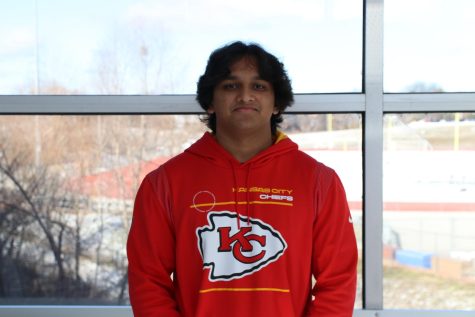
Pranav Sriraman, senior, is the Productions Editor for the Marquette Messenger and Associate Producer for MHS News during the 2022-2023 school year. Outside...




